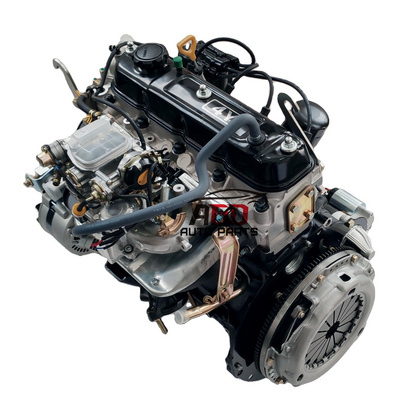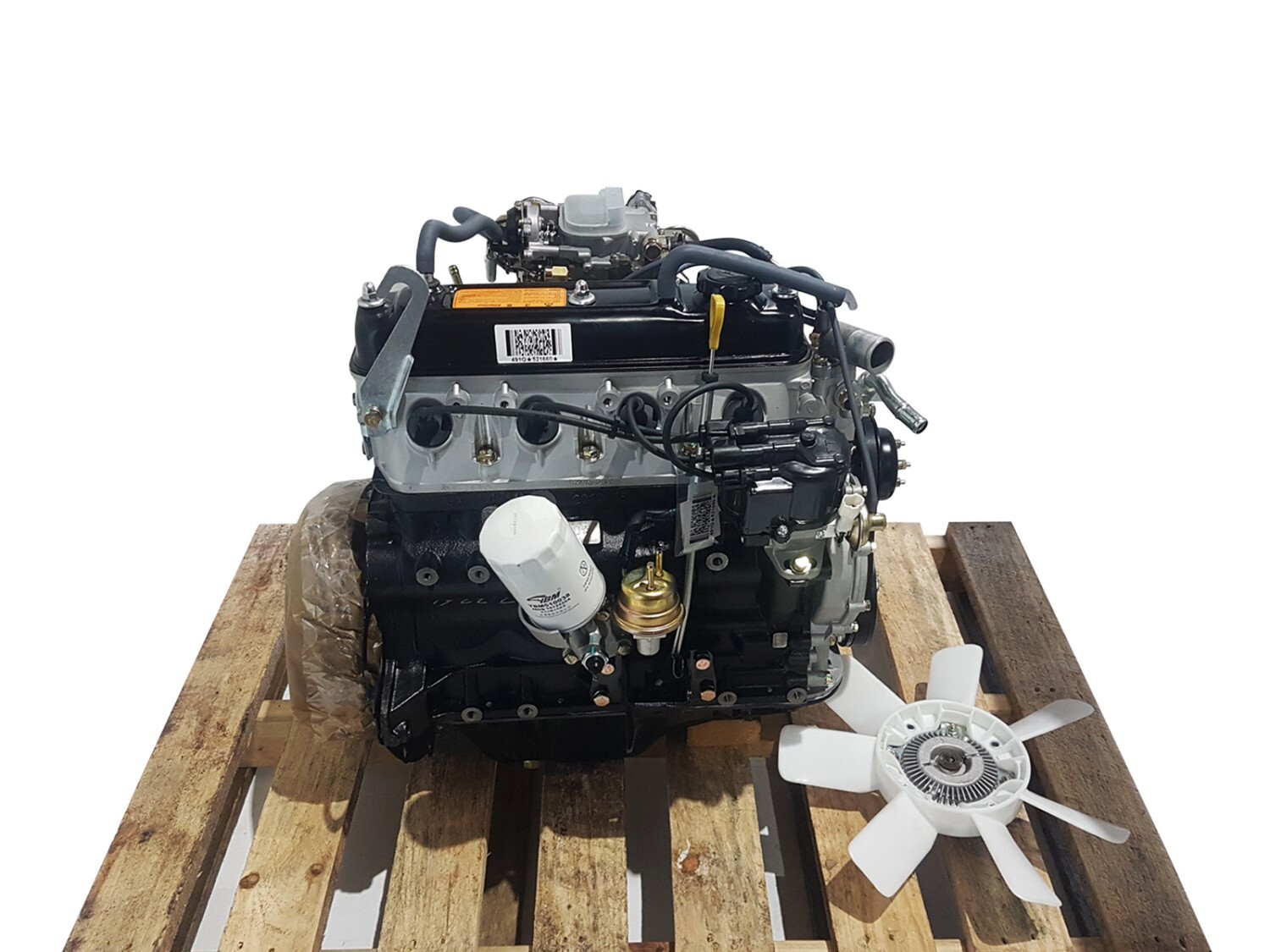Why the Engine Is the very best Choice for Efficiency and Efficiency in Your Cars And Truck
The engine remains a crucial component in vehicle design, mostly due to its considerable impact on both performance and effectiveness. As innovations in technology make it possible for smaller engines to provide exceptional power while optimizing fuel economic situation, the integration of functions such as turbocharging and crossbreed systems comes to be increasingly crucial. These technologies not only enhance driving experience however additionally address ecological concerns. Nevertheless, the inquiry emerges: how do these aspects coalesce to redefine our understanding of vehicle efficiency? Discovering this equilibrium reveals deeper insights into the future of engine layout.
Understanding Engine Types
Recognizing the numerous kinds of engines is critical for maximizing efficiency and effectiveness in automobile design. The key engine kinds consist of internal combustion engines (ICE), electrical engines, and crossbreed systems, each offering unique advantages and constraints.
Inner combustion engines, which can be further categorized into gasoline and diesel variants, count on the combustion of fuel to create power. Gas engines normally offer higher RPMs and far better acceleration, while diesel engines are recognized for their torque and gas efficiency, making them ideal for sturdy applications.
Electric engines, on the other hand, utilize electrical motors powered by batteries or fuel cells. They supply immediate torque shipment, causing smooth velocity and lower exhausts. The efficiency of electrical engines is substantially greater than that of ICEs, making them a preferred choice for eco-conscious customers.
Hybrid systems incorporate both interior burning and electric engines, leveraging the toughness of both innovations. They maximize fuel intake by utilizing electrical power at lower speeds and switching over to gas or diesel for greater speeds or much heavier lots.
Selecting the appropriate engine type is crucial for accomplishing wanted performance metrics and ecological sustainability in modern-day automobile design.
The Impact of Engine Size
Engine size often plays an essential duty in establishing an automobile's performance and efficiency. Typically determined in liters or cubic centimeters, engine dimension straight affects the power result and torque features of a vehicle.
However, increased engine size frequently correlates with decreased fuel efficiency. Larger engines consume even more gas, bring about greater exhausts and functional expenses. As a result, producers should balance the demand for power with the demand for gas economic situation. Smaller engines can deliver adequate efficiency for day-to-day driving while advertising better efficiency, making them a preferred selection in small and mid-size vehicles.
In addition, developments in engine design, such as turbocharging and straight fuel shot, allow smaller sized engines to achieve power degrees comparable to their bigger counterparts. This fad highlights the relevance of not exclusively concentrating on engine dimension but likewise considering general vehicle style and technology (4y engine). Eventually, the influence of engine size on efficiency and efficiency highlights the need for consumers to analyze their particular driving preferences and demands when selecting an automobile
Advanced Engine Technologies
Advancements in engine modern technologies have considerably improved the landscape of auto performance and efficiency, building upon the foundational ideas developed by engine dimension. Especially, advancements such as turbocharging and direct fuel injection have allowed smaller engines to provide power degrees formerly related to bigger equivalents. Turbochargers press air getting in the engine, enabling increased power output without a corresponding increase in engine size, while direct shot maximizes gas distribution, boosting burning performance.
In addition, variable shutoff timing systems have actually arised as an important modern technology, permitting engines he said to change valve operation based on driving conditions. This flexibility boosts both efficiency during acceleration and fuel performance throughout travelling. Crossbreed and electrical engine innovations even more illustrate the change in auto style, integrating conventional internal burning engines with electrical motors to optimize effectiveness while decreasing emissions.
Furthermore, innovations in products science have actually caused lighter, much more durable engine parts, additionally enhancing efficiency and durability. The integration of innovative electronics and engine control units likewise allows for real-time changes, making sure optimal efficiency across numerous conditions. Jointly, these sophisticated engine technologies not just improve automobile performance however also add to a more lasting automotive future, showing the ongoing development of engine design.
Balancing Power and Performance
Striking a balance in between power and efficiency is critical in modern auto design as makers seek to satisfy increasingly strict emissions laws while satisfying consumer need for efficiency (4y engine). The challenge depends on optimizing engine attributes to supply robust power outcome without compromising gas economy
To accomplish this equilibrium, designers employ different approaches, such as turbocharging, which enhances engine power by requiring in even page more air, permitting a smaller sized engine displacement that enhances gas performance. Variable shutoff timing technologies also play a considerable duty, making it possible for engines to adjust their performance qualities based on driving conditions, consequently boosting both power and performance.
Furthermore, developments in materials and producing methods have actually brought about lighter engine parts, which reduce overall vehicle weight and improve fuel efficiency without compromising power. Hybrid technologies have also arised as a viable solution, combining traditional inner burning engines with electrical powertrains to supply an increase in performance while maintaining lower emissions.

Future Fads in Engine Style

Furthermore, the growth of advanced products, such as lightweight composites and high-strength alloys, is readied to change engine elements. These products not only minimize weight yet also boost thermal efficiency, thus maximizing performance. Furthermore, suppliers are exploring variable compression ratios, permitting engines to adapt to different driving conditions, boosting both power output and fuel economic climate.
Better, the rise of synthetic knowledge and artificial intelligence in engine style is making it possible for anticipating maintenance and real-time performance optimization. This innovation can cause engines that self-adjust for optimal performance based on driving patterns.

Conclusion
In final thought, the engine serves as a vital part in accomplishing optimal performance and performance in modern-day automobiles. The interplay in between engine dimension and style continues to advance, driving technologies that balance exciting efficiency with ecological sustainability.
Additionally, advancements in engine layout, such as turbocharging and direct fuel shot, allow smaller sized engines to accomplish power levels equivalent to their larger counterparts.Advancements in engine innovations have actually substantially reshaped the landscape of auto performance and efficiency, structure upon the foundational ideas established by engine dimension. Turbochargers compress air getting in the engine, allowing for raised power outcome without an equivalent boost in engine dimension, while direct shot optimizes gas delivery, boosting combustion effectiveness.
Hybrid and electric engine modern technologies even more highlight the shift in auto design, integrating traditional interior burning engines with electric motors to make best use of efficiency while lowering emissions.
Collectively, these innovative engine technologies not only boost vehicle performance yet also contribute to a much more lasting automotive future, demonstrating the continuous advancement of engine design. (4y engine)
Comments on “The History and Evolution of the 4Y Engine in Automotive Engineering”